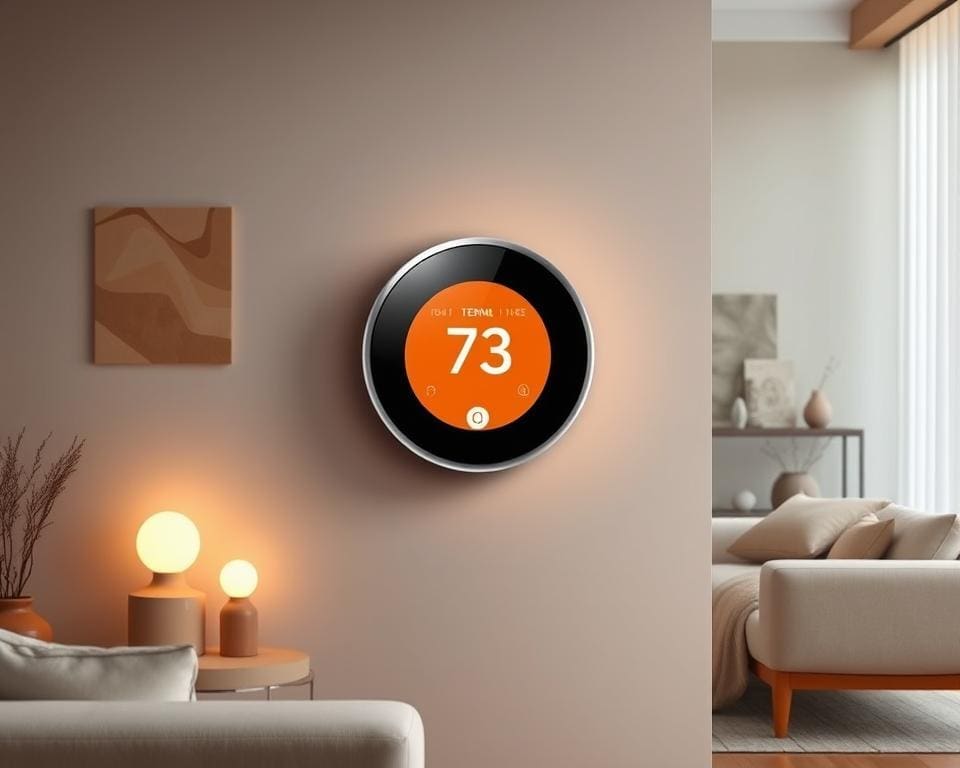In an era where home automation plays a pivotal role in enhancing modern living, smart thermostats have emerged as essential tools for achieving optimal climate control within our homes. These innovative devices not only provide an unparalleled level of convenience but also align seamlessly with today’s focus on energy efficiency. By enabling users to tailor their indoor environments to personal preferences, smart thermostats significantly improve quality of life while fostering a more sustainable future.
Key players in the market, such as Nest, Ecobee, and Honeywell, are transforming how we experience heating and air conditioning, paving the way for greater energy savings. As we embrace these advancements, it becomes clear that smart thermostats are not merely luxuries but vital components of a comfortable and efficient home.
Understanding Smart Thermostats
Smart thermostats represent a significant advancement in home automation, fundamentally transforming how we manage our living environments. Integrating smart technology into residential settings enables seamless control of heating and cooling, creating a persona that adapts to individual lifestyles. Understanding the core components of these devices can help users appreciate their benefits.
What Are Smart Thermostats?
At their essence, smart thermostats are innovative devices designed to regulate smart heating systems effectively. These advanced tools connect to the internet, allowing homeowners to monitor and adjust their heating and cooling preferences remotely via smartphones or tablets. This capability not only enhances convenience but also encourages energy savings, as users can manage their systems from virtually anywhere.
How Smart Thermostats Work
The functionality of smart thermostats relies on multiple sensors—temperature, humidity, and occupancy. These sensors collect data to understand user habits and preferences. Over time, smart technology enables the devices to learn and adjust settings automatically, optimising energy use while maintaining comfort. Key features such as programmable schedules and automatic temperature adjustments ensure that homes remain inviting and energy-efficient.

Benefits of Smart Thermostats for a Comfortable Home
Smart thermostats offer numerous benefits, transforming the way households manage their indoor climates. These innovative devices allow for enhanced convenience, energy efficiency, and improved temperature regulation, creating a more comfortable living environment.
Enhanced Convenience and Control
The ability to control your home’s heating and cooling systems from anywhere is a game-changer. Users can adjust their smart thermostats via smartphone apps, ensuring that the house is always at the desired temperature upon arrival. This convenience elevates everyday life, allowing for a tailored experience in climate control.
Energy Efficiency and Cost Savings
Integrating energy-saving devices like smart thermostats into your home significantly reduces energy consumption. Studies suggest these systems can lead to a reduction in energy bills by up to 20%. This not only benefits individual households financially but also contributes positively to the environment by lowering overall carbon footprints.
Improved Temperature Regulation
Smart thermostats excel in maintaining consistent temperatures throughout the day. They use advanced algorithms to monitor and adapt to fluctuations, ensuring that homes remain comfortable regardless of outside weather conditions. With precise temperature control, residents can enjoy their spaces without the worry of unexpected chills or heat.
Key Features of Smart Thermostats
Modern smart thermostats come equipped with several key features that set them apart in the dynamic field of home automation. These functionalities not only enhance user experience but also optimise the operation of smart heating systems.
Remote Access and Mobile Applications
The ability to control your heating from anywhere provides unparalleled convenience. With remote access through mobile applications, homeowners can easily adjust settings while away from home. Whether on holiday or at work, the option to manage temperature settings ensures that energy consumption is efficient. This level of control is vital for maintaining comfort and can lead to considerable savings on energy bills.
Learning Capabilities and AI Integration
AI technology revolutionises how users interact with their smart heating systems. Thermostats that incorporate learning capabilities adapt to the unique routines and preferences of each household. Devices such as the Nest Learning Thermostat monitor usage patterns and make automatic adjustments, allowing for personalised climate control that evolves over time. This not only enhances comfort but also supports greater energy efficiency, making homes smarter and more sustainable.
Choosing the Right Smart Thermostat
When investing in a smart thermostat, ensuring compatibility with your existing heating systems is paramount. Different setups, whether gas, electric, or heat pump systems, may require specific models. It’s advisable to thoroughly research the options available from leading brands like Nest or Honeywell, ensuring that the chosen device seamlessly integrates with your current configuration for optimal climate control.
Compatibility with Existing Heating Systems
Verifying compatibility isn’t just about maintaining functionality; it also plays a significant role in achieving the desired energy efficiency and cost savings. Many smart technologies offer compatibility check tools on their websites, allowing users to assess whether their planned purchase will work effectively with their heating system. This step can prevent future discrepancies and ensure a smoother installation process.
Features to Look For
While compatibility is essential, focusing on features that enhance your daily life is equally crucial. Consider capabilities like voice control, which allows for effortless climate control through assistants such as Amazon Alexa or Google Assistant. Furthermore, look out for smart features like usage reports and the ability to interconnect with other smart home devices. This approach not only meets individual heating control needs but also elevates your overall home automation experience.









